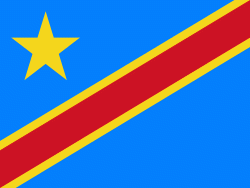Lodja
Lodja is a remote town in the Sankuru (formerly Kasaï-Oriental) province in central Democratic Republic of the Congo. It is serviced by the Lodja Airport which is about 7 km from town. Lodja is a hub for both rice production in the province and diamond mining in the country. Lodja is and has been home to many Tetela.
Lodja Hospital was built in the 1950s by Belgian colonizers but was abandoned unfinished when the Republic of the Congo declared independence in 1960. The town was captured by rebel forces during the Second Congo War in April 1999 but returned to Congolese rule by January 2000.
According to censuses, Lodja had 28,671 residents in 1984; 52,798 in 2004; 64,147 in 2012; and 68,244 in 2016.
Lodja Hospital was built in the 1950s by Belgian colonizers but was abandoned unfinished when the Republic of the Congo declared independence in 1960. The town was captured by rebel forces during the Second Congo War in April 1999 but returned to Congolese rule by January 2000.
According to censuses, Lodja had 28,671 residents in 1984; 52,798 in 2004; 64,147 in 2012; and 68,244 in 2016.
Map - Lodja
Map
Country - Democratic_Republic_of_the_Congo
 |
 |
| Flag of the Democratic Republic of the Congo | |
Centered on the Congo Basin, the territory of the DRC was first inhabited by Central African foragers around 90,000 years ago and was reached by the Bantu expansion about 3,000 years ago. In the west, the Kingdom of Kongo ruled around the mouth of the Congo River from the 14th to 19th centuries. In the northeast, center and east, the kingdoms of Azande, Luba, and Lunda ruled from the 16th and 17th centuries to the 19th century. King Leopold II of Belgium formally acquired rights to the Congo territory in 1885 and declared the land his private property, naming it the Congo Free State. From 1885 to 1908, his colonial military forced the local population to produce rubber and committed widespread atrocities. In 1908, Leopold ceded the territory, which thus became a Belgian colony.
Currency / Language
| ISO | Currency | Symbol | Significant figures |
|---|---|---|---|
| CDF | Congolese franc | Fr | 2 |
| ISO | Language |
|---|---|
| FR | French language |
| KG | Kongo language |
| LN | Lingala language |















